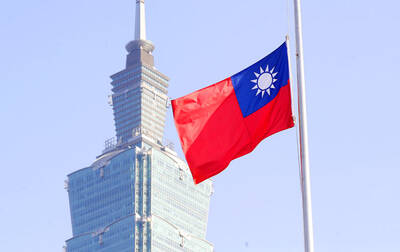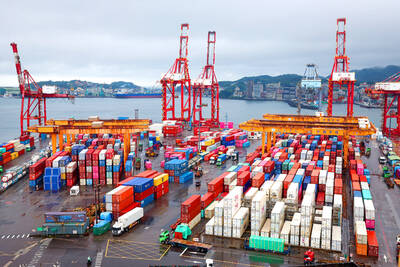US stocks managed to hold steady in a week that saw the US financial markets shuttered entirely for the first time since the Sept. 11 attacks due to the devastating superstorm Sandy.
However, traders were also on edge for the coming presidential election on Tuesday, with the race between US President Barack Obama and challenger Mitt Romney — who promises a different future for the finance industry — too close to call.
The first weather-forced two-day closure on Wall Street since the Great Blizzard of 1888 came as Sandy flooded the lower reaches of Manhattan, halted east coast transportation and left millions powerless, including some of the world’s most powerful banks, investment managers and brokerages.
Trade came back up on Wall Street on Wednesday, but many traders were still hobbled by the power shortages and telecommunications problems.
With quarterly results still coming in largely showing slowing gains, the S&P 500 ended the week up a bare 0.2 percent from the previous Friday, at 1,414.20.
The narrower Dow Jones Industrial Average of 30 blue chips was down 0.1 percent at 13,093.16, and the NASDAQ Composite gave up 0.2 percent to 2,982.13.
The heavy effects of Sandy — with total losses estimated to hit US$50 billion and insured losses that could reach US$20 billion — offset the impact of a positive jobs report for last month released on Friday.
While the jobless rate ticked upward slightly to 7.9 percent, the number of new jobs created jumped to 171,000, sustaining a moderate pace.
The numbers gave an initial upward push to the market, but it fell back into negative territory.
Some took that to raise the question of whether the US Federal Reserve could cut short its ultra-low rate policy sooner than expected, a bearish sign for stocks.
“As welcome as these numbers are, they aren’t strong enough to deter the Fed from expanding QE3 [third round of quantitative easing] next year to offset the expiration of Operation Twist,” Nigel Gault and Paul Edelstein of IHS Global Insight said.
At any rate, the election loomed over everything, another reason stocks moved sideways.
“Perhaps markets are wary of being fooled by distorted year-end jobs numbers again ... Or perhaps markets are holding their breath ahead of the elections like everyone else,” the IHS Global Insight economists said.
“Either outcome could provide a ‘certainty’ dividend for markets looking for clarity, though a Romney win might be cheered more forcefully,” they said.
Post-election will bring the fiscal cliff battle, with the Democrats and Republicans fighting over how to right the budget deficit without forcing the country into recession, a distinct possibility if they fail to reach a compromise before Dec. 31.
At the same time, it opens the holiday shopping season, which can be boon or bust for many retailers and their share prices. Forecasts are for healthy growth, but not better than last year’s.
“It is that time of year again, as consumers gear up to head to the stores for the holiday shopping season,” Wells Fargo Securities said.
“We estimate holiday retail sales will post a modest rise of 3.8 percent year over year, an increase in sales, but off last year’s 5.7 percent growth pace,” it said.
“Several factors that will likely hold back consumer spending this year, along with slow personal income growth, include increased economic uncertainty and the impending fiscal cliff of government budget cuts and tax increases slated to go into effect in January,” it said.

ELECTRONICS BOOST: A predicted surge in exports would likely be driven by ICT products, exports of which have soared 84.7 percent from a year earlier, DBS said DBS Bank Ltd (星展銀行) yesterday raised its GDP growth forecast for Taiwan this year to 4 percent from 3 percent, citing robust demand for artificial intelligence (AI)-related exports and accelerated shipment activity, which are expected to offset potential headwinds from US tariffs. “Our GDP growth forecast for 2025 is revised up to 4 percent from 3 percent to reflect front-loaded exports and strong AI demand,” Singapore-based DBS senior economist Ma Tieying (馬鐵英) said in an online briefing. Taiwan’s second-quarter performance beat expectations, with GDP growth likely surpassing 5 percent, driven by a 34.1 percent year-on-year increase in exports, Ma said, citing government

UNIFYING OPPOSITION: Numerous companies have registered complaints over the potential levies, bringing together rival automakers in voicing their reservations US President Donald Trump is readying plans for industry-specific tariffs to kick in alongside his country-by-country duties in two weeks, ramping up his push to reshape the US’ standing in the global trading system by penalizing purchases from abroad. Administration officials could release details of Trump’s planned 50 percent duty on copper in the days before they are set to take effect on Friday next week, a person familiar with the matter said. That is the same date Trump’s “reciprocal” levies on products from more than 100 nations are slated to begin. Trump on Tuesday said that he is likely to impose tariffs

HELPING HAND: Approving the sale of H20s could give China the edge it needs to capture market share and become the global standard, a US representative said The US President Donald Trump administration’s decision allowing Nvidia Corp to resume shipments of its H20 artificial intelligence (AI) chips to China risks bolstering Beijing’s military capabilities and expanding its capacity to compete with the US, the head of the US House Select Committee on Strategic Competition Between the United States and the Chinese Communist Party said. “The H20, which is a cost-effective and powerful AI inference chip, far surpasses China’s indigenous capability and would therefore provide a substantial increase to China’s AI development,” committee chairman John Moolenaar, a Michigan Republican, said on Friday in a letter to US Secretary of

‘REMARKABLE SHOWING’: The economy likely grew 5 percent in the first half of the year, although it would likely taper off significantly, TIER economist Gordon Sun said The Taiwan Institute of Economic Research (TIER) yesterday raised Taiwan’s GDP growth forecast for this year to 3.02 percent, citing robust export-driven expansion in the first half that is likely to give way to a notable slowdown later in the year as the front-loading of global shipments fades. The revised projection marks an upward adjustment of 0.11 percentage points from April’s estimate, driven by a surge in exports and corporate inventory buildup ahead of possible US tariff hikes, TIER economist Gordon Sun (孫明德) told a news conference in Taipei. Taiwan’s economy likely grew more than 5 percent in the first six months